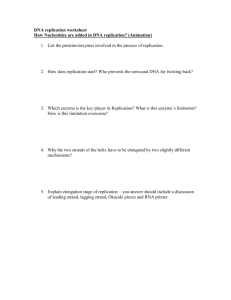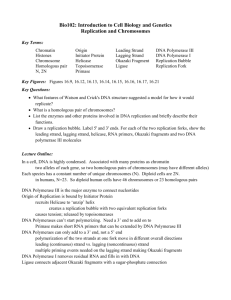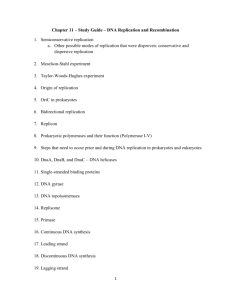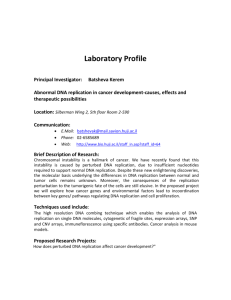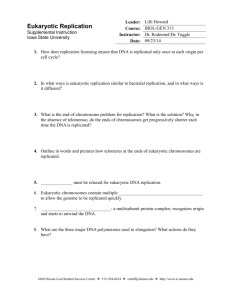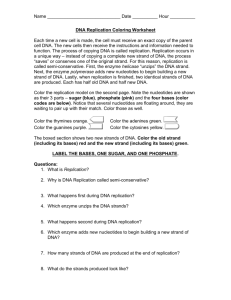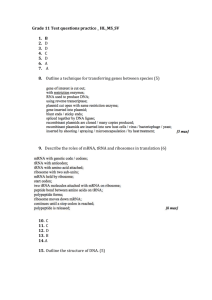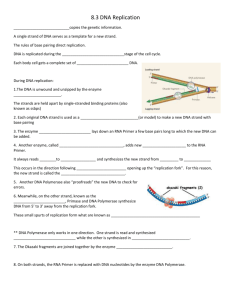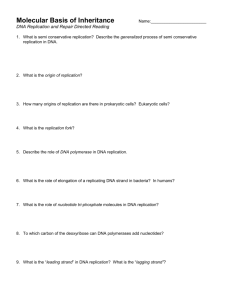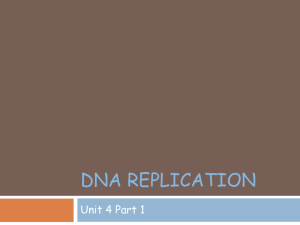Chapter 12.3-DNA Relplication
advertisement
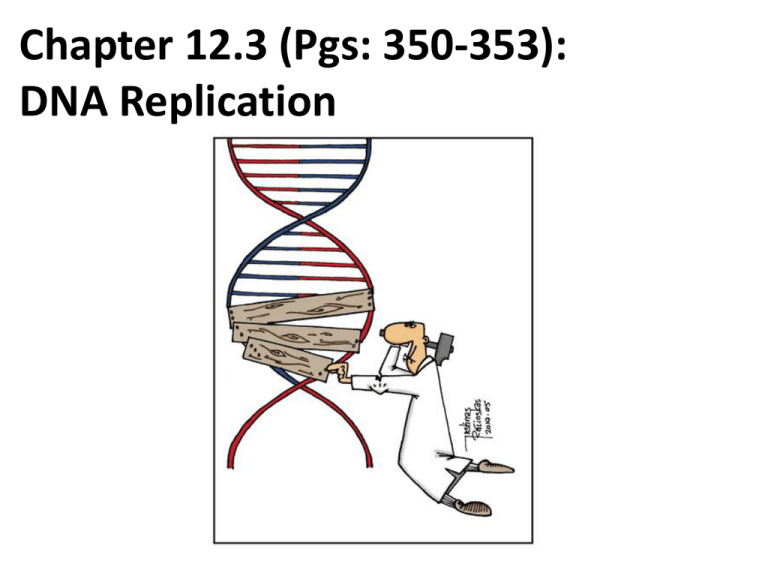
Chapter 12.3 (Pgs: 350-353): DNA Replication The Replication Process 1. DNA separates into two strands - Accomplished by the enzyme helicase - Creates a replication fork - Each strand is a template for a new one The Replication Process 2. New bases are added - Accomplished by the enzyme DNA polymerase, which also proofreads DNA - Follows the rules of base pairing - Moves in opposite directions The Replication Process 3. Two identical copies are created - Each copy has an original strand and a new strand The Replication Process 1. DNA separates into two strands - Accomplished by the enzyme helicase - Creates a replication fork - Each strand is a template for a new one 2. New bases are added - Accomplished by the enzyme DNA polymerase, which also proofreads DNA - Follows the rules of base pairing - Moves in opposite directions 3. Two identical copies are created - Each copy has an original strand and a new strand Differences in DNA Replication - Prokaryotes have a single circular chromosome - Replication begins at one point and continues in two directions - Eukaryotes have multiple linear chromosomes - Replication begins in multiple places on a chromosome and continues in both directions Telomeres - The tips of eukaryotic chromosomes - The ends of chromosomes are difficult to copy and can get cut off - The enzyme telomerase can repair the ends and keep the ends from becoming lost or damaged

